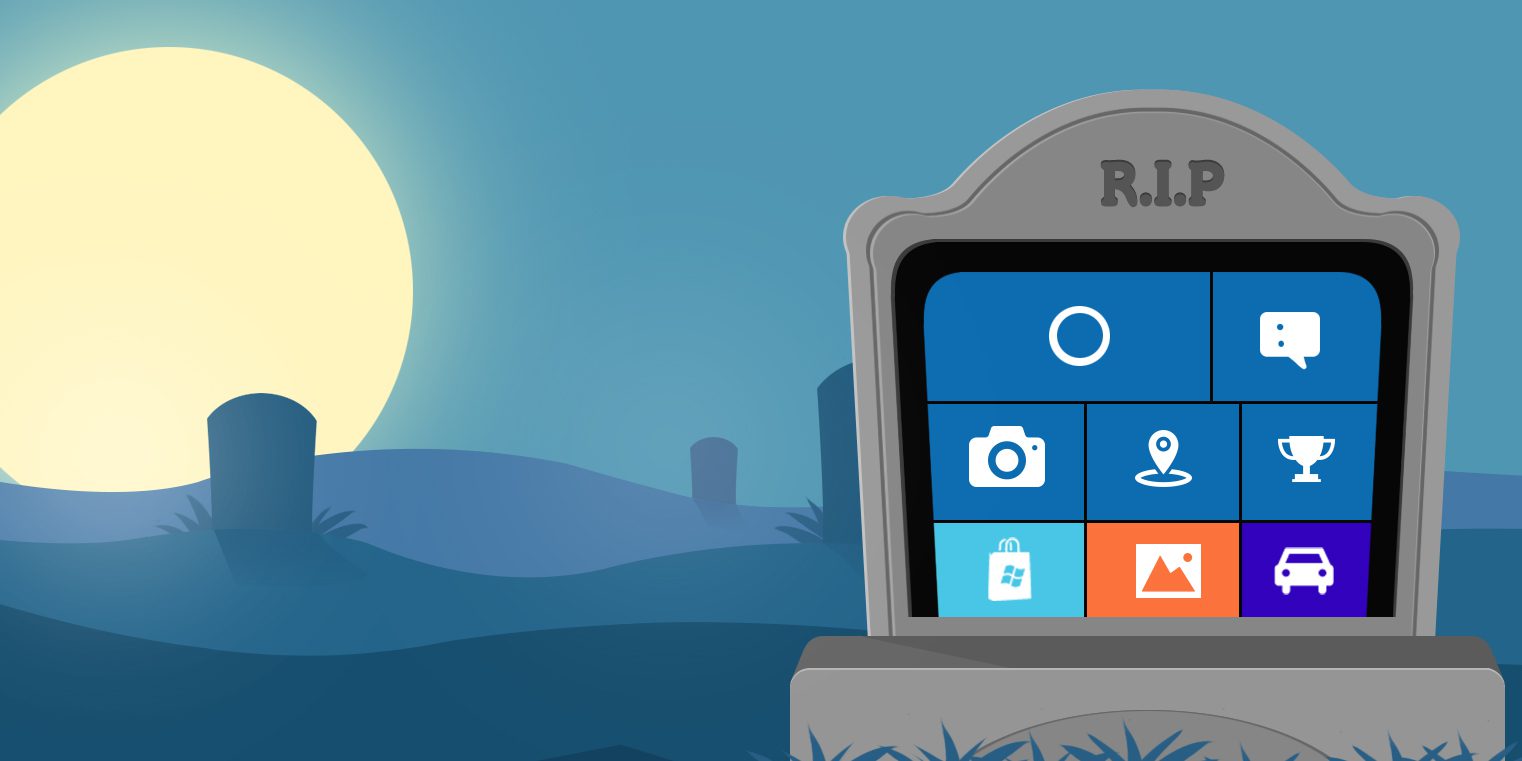Microsoft officially pulled the plug on Windows Phone in July of last year. Of course, the announcement of the end of Redmond’s technical support for the mobile OS was really just a confirmation of what most app developers and users already knew: Windows Phone had been languishing for a long time. This death knell was just making it official.

Unlike its more successful pushes into console gaming and productivity tablet markets, Microsoft’s attempt to muscle its way into the mobile arena was a failure by most metrics. There are many reasons why the operating system failed, but in this article we’re going to examine the factors from a custom mobile app developer’s point of view. Here’s why Windows Phone finally expired in 2017.
Divisive UI
While most companies seeking inter-product promotion and synergy, Microsoft wound up doing the opposite. The debut of their desktop operating system, Windows 8, resulted in a massive backlash from average consumers and power-users alike. The reason? A daring move on Microsoft’s part to do away with the venerable Start button and introduce a UI they dubbed Metro. Metro was, to put it mildly, met with mixed reviews.
The tile-based, full-screen UI was a departure from the desktop-centric designs from past versions of Windows. Microsoft was trying to bridge the design divided between their mobile and desktop products, but power-users were in full revolt over the changes. The resentment cast a shadow over their mobile OS, and you couldn’t mention Windows Phone without citing the Metro PR debacle.
Lackluster Hardware
There are few brands that command the reverence and nostalgia of their users, but Nokia is certainly one of them.With their “built-like-a-brick” reputation and reliability, the brand was loved, but had lost their way in later years. Their Symbian operating system failed to keep pace with modern rivals like Google and Apple, and their hardware had none of the bells and whistles of their competitors either. So when Microsoft bought the Finnish company, hopes were high they could revive the brand. The gambit didn’t pay off. Microsoft wrote off nearly $8bn in losses just a few years later, with Steve Ballmer declaring the move a “colossal failure.”
Failure to Garner App Creators
If fear is the mind killer, then barren and abandoned app ecosystems are the mobile OS killer. In this day and age, the success of operating systems are is to apps. And, generally speaking, apps need large and healthy user bases to succeed. Windows Phone found itself in the unenviable position of trying to convince both users and mobile app developers to make the jump over the more well known Android and iOS devices.
While a phone is an expensive proposition for most consumers, dedicating the time and resources to creating an entirely new version of an application is a bigger risk that some companies weren’t willing to make. Without that crucial buy-in from developers to support Windows Phone, the Microsoft App store seemed empty. Users weren’t willing to make the leap if the apps they used daily weren’t available to them.
Hope for the Future
With so much doom and gloom surrounding Windows Phone, it’s can be easy to count Microsoft completely out of the mobile device arena. But doing so would be underestimating a still-powerful Silicon Valley player. Microsoft’s Outlook app, which runs on both Android and iOS, is largely heralded as one of the best mail clients in the industry. And Microsoft’s Surface line of tablets have also found a foothold in an otherwise slumping tablet market.
As for mobile operating systems, Window 10 itself is able to run across both desktop and mobile devices, offering a unified interface forth both. While Microsoft will likely never be able to crack the upper echelons of market share, they have found success in other mobile areas. Only time will tell if the Redmond giant will attempt to break into the industry again.


